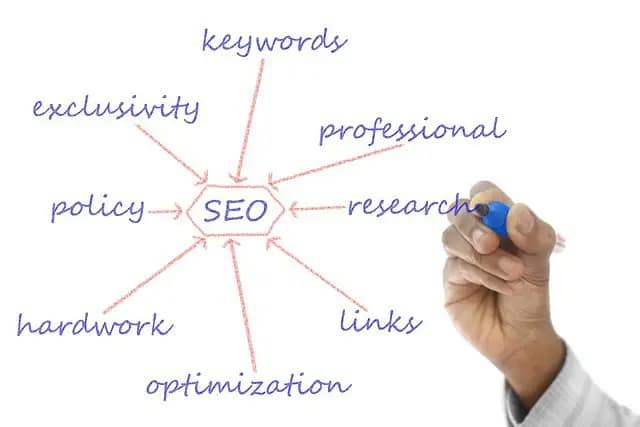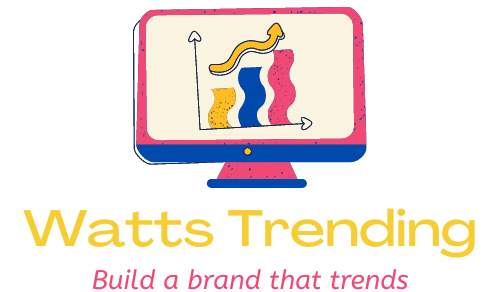
Some of the links in this post are affiliate links, which means I may earn a small commission at no extra cost to you if you make a purchase. Your support helps keep this blog running, and I only recommend products I believe in. Thanks for being a part of this community! Here's how it works.
Creating engaging content is the cornerstone of a successful blog. Whether you’re a business owner, a marketer, or a hobbyist, having high-quality content on your blog is essential for attracting and retaining readers.
In this blog post, we’ll explore different types of content and provide tips on how to write compelling headlines, structure your posts, use visuals, and optimize your content for SEO.
By following these tips, you’ll be able to create content that resonates with your audience and keeps them coming back for more. Let’s get started!

Types of Content:
There are many different types of content that you can create for your blog, and each type has its own benefits and challenges. Here are some of the most popular types of content:
Articles:
Articles are one of the most common types of content on the web. They are a great way to share information and insights with your readers.
When writing articles, it’s important to choose a topic that is relevant to your audience and provides valuable and unique insights.
Use short sentences and paragraphs, and include subheadings and bullet points to make your article easy to read.
Tutorials:
Tutorials are a highly effective way to teach your readers new skills or help them accomplish specific tasks.
When creating a tutorial, it’s important to break the process down into simple steps and use clear, concise language.
Use images or videos to illustrate each step, and provide tips and troubleshooting advice.
Reviews:
Reviews provide valuable feedback on products or services, and they can help your readers make informed purchasing decisions.
When writing reviews, it’s important, to be honest and transparent and provide a balanced assessment of the product or service.
Use real-life examples and provide detailed information on the features and benefits.
Videos:
Videos are a highly engaging way to communicate with your audience.
They can be used to share information, demonstrate products or services, or provide entertainment.
When creating videos, it’s important to keep them short and to the point and use engaging visuals and sound effects.
You can also use captions or subtitles to make your videos more accessible to a wider audience.
Additionally, by choosing the right type of content for your blog and creating it effectively, you can engage your audience and build a loyal following.
Writing Compelling Headlines
Writing a compelling headline is crucial for attracting readers to your blog post. Furthermore, Your headline is the first impression your reader has of your content, so it needs to be eye-catching and intriguing.
Here are some tips to help you write compelling headlines:
Be Clear and Specific:
Your headline should accurately reflect the content of your post. Be clear and specific about what readers can expect to learn or gain from reading your post.
Use Active Verbs and Numbers:
Using active verbs and numbers in your headline can make it more impactful and memorable. Active verbs create a sense of action and urgency, while numbers can make your content more tangible and specific.
Add Emotional Triggers:
Adding emotional triggers to your headline can help connect with readers on a deeper level. Use words that evoke emotion, such as “surprising,” “heartwarming,” or “shocking,” to make your headline more compelling.
Keep it Short and Sweet:
Shorter headlines are more effective at grabbing attention and encouraging readers to click through to your post. Aim for a headline that is no more than 10 words.
Use SEO Best Practices:
Incorporate relevant keywords in your headline to help your post rank higher in search engine results. But make sure the keyword usage feels natural and doesn’t compromise the quality of your headline.
Finally, by following these tips, you can write headlines that grab your readers’ attention and entice them to read more.

Structuring Your Posts
Structuring your posts can make a big difference in how well they are received by your readers. Here are some tips for structuring your posts effectively:
Start with an Introduction:
Also, your introduction should hook your readers and make them want to keep reading. Use a compelling opening sentence or question to grab their attention, and provide some context for the topic you’ll be discussing.
Subheadings:
Subheadings break up your post into smaller, more digestible sections. They help readers quickly identify the main points of your post and make it easier to scan for information. Use clear and descriptive subheadings that accurately reflect the content of each section.
Use Short Paragraphs:
Long paragraphs can be overwhelming to readers and discourage them from reading further. Use short paragraphs to break up your content and make it more approachable.
Bulleted or Numbered Lists:
Bulleted or numbered lists are a great way to convey information in a clear and concise manner. They are also easier to scan, which can improve the readability of your post.
End with a Conclusion:
Your conclusion should summarize the main points of your post and provide a call to action for your readers. Encourage them to leave a comment, share your post on social media, or sign up for your newsletter.
Furthermore, by structuring your posts in a logical and easy-to-follow manner, you can make them more engaging and appealing to your readers.
Using Visuals
Using visuals in your blog posts can make them more engaging and memorable for your readers.
Here are some tips for incorporating visuals effectively:
- Relevant Images: Choose images that are relevant to your post and help illustrate your points. Make sure they are high-quality and visually appealing.
- Graphics and Charts: Graphics and charts can help explain complex concepts or data in a clear and concise manner. Use them to add visual interest to your post and make it easier for readers to understand your content.
- Videos: Videos are an effective way to engage readers and provide more in-depth information on a topic. You can embed videos from YouTube or Vimeo, or create your own using tools like Loom or Screencastify.
- Use Alt Tags: Alt tags are descriptions of your images that help search engines understand the content of your post. Use descriptive alt tags that accurately reflect the content of your images.
- Don’t Overdo it: While visuals can enhance your blog post, using too many can be overwhelming and distracting for your readers. Use visuals strategically to complement your content, not to overshadow it.
By incorporating relevant and visually appealing images, graphics, charts, and videos into your blog posts, you can make them more engaging and appealing to your readers. Don’t forget to use alt tags and avoid overwhelming your readers with too many visuals.

Optimizing Your Content for SEO
Optimizing your blog content for search engines can help increase your visibility and attract more traffic to your site.
Here are some tips for optimizing your content for SEO:
- Choose Relevant Keywords: Research relevant keywords related to your post using tools like Google Keyword Planner or Ahrefs. Include these keywords in your post title, headings, meta description, and throughout your content.
- Write Quality Content: Search engines favor high-quality content that provides value to readers. Make sure your blog post is well-written, informative, and engaging.
- Use Descriptive URLs: Use descriptive URLs that accurately reflect the content of your post. Avoid using generic URLs like “www.example.com/blogpost1” and instead use URLs like “www.example.com/how-to-write-compelling-headlines“.
- Use Meta Descriptions: Meta descriptions provide a brief summary of your post and appear in search engine results. Use descriptive and engaging meta-descriptions that accurately reflect the content of your post.
- Build Backlinks: Backlinks from other websites can help increase your blog’s authority and improve its ranking in search results. Reach out to other bloggers or websites in your niche and ask them to link to your post.
By optimizing your content for SEO, you can improve your blog’s visibility in search engine results and attract more traffic to your site. Remember to choose relevant keywords, write quality content, use descriptive URLs and meta descriptions, and build backlinks to your post.

Examples of Successful Bloggers
There are many successful bloggers out there who have mastered the art of creating engaging content that resonates with their audience. Therefore, by studying their best practices and techniques, you can gain inspiration and insights for your own blog.
Here are a few examples of successful bloggers and what you can learn from them:
Neil Patel:
Neil Patel is a digital marketing expert and founder of Neil Patel Digital. His blog is a treasure trove of valuable content on topics like SEO, content marketing, and social media.
Neil is known for his data-driven approach, in-depth guides, and actionable advice. You can learn from Neil by creating long-form, data-driven content that provides value to your readers and using social media to promote your blog.
Color Me Courtney:
Courtney Quinn, better known as Color Me Courtney, is a fashion and lifestyle blogger who has built a successful brand around her blog and social media platforms.
Her blog, colormecourtney.com, features colorful and bold fashion choices, along with lifestyle content that reflects her bubbly personality.
Courtney’s success lies in her ability to create a unique and distinctive brand that resonates with her audience. She also uses Instagram as a primary platform to showcase her fashion choices and connect with her followers.
You can learn from Courtney by developing a unique brand that reflects your personality and resonates with your audience, creating visually appealing and engaging content, and leveraging social media to promote your blog and engage with your audience.
Seth Godin:
Seth Godin is a bestselling author and entrepreneur who has been blogging for over a decade.
His blog, Seth’s Blog, is known for its short and pithy posts on topics like marketing, leadership, and creativity. Seth’s success lies in his ability to distill complex ideas into simple and relatable concepts that resonate with his readers.
You can learn from Seth by focusing on clear and concise writing, building a personal brand, and creating a loyal community of followers.
Suzi Whitford:
Suzi Whitford is the founder of StartaMomBlog.com, where she teaches moms how to start and grow their own profitable blogs.
Suzi’s success lies in her ability to create content that speaks directly to her target audience and provides practical advice and support. She offers free courses, templates, and resources to help moms get started, and she also offers a paid membership site for more in-depth training and support.
You can learn from Suzi by focusing on a specific niche, providing practical solutions to your readers’ problems, and creating a strong community around your blog.
Pat Flynn:
Pat Flynn is an online entrepreneur and founder of Smart Passive Income.
His blog is all about teaching people how to create passive income streams through blogging, podcasting, and other online businesses. Pat’s success lies in his ability to connect with his audience and provide practical advice and case studies that show how others have succeeded.
You can learn from Pat by creating case studies and tutorials that show how your readers can achieve their goals, and by building a strong personal brand through podcasting, speaking, and networking.
Whitney Bonds:
Whitney Bonds is the founder of Tried and True Mom Jobs, a blog dedicated to helping moms find legitimate work-from-home job opportunities.
Whitney’s blog features job listings, tips on how to find remote work and guides on how to start a side hustle.
Her success lies in her ability to provide valuable resources for her audience and create content that addresses a specific pain point for her target audience: finding work-from-home opportunities as a mom.
She also uses various social media platforms, such as Facebook and Pinterest, to promote her blog and engage with her followers.
You can learn from Whitney by creating valuable resources for your audience, addressing a specific pain point, and leveraging social media to promote your blog and engage with your audience.
Adam Enfroy:
Adam Enfroy is a blogger and digital marketing expert who has rapidly grown his blog to over 500,000 monthly readers in just a few years.
His blog focuses on topics like affiliate marketing, SEO, and entrepreneurship, and he’s known for his in-depth guides and case studies. Adam’s success lies in his ability to provide practical advice that is backed by his own personal experiences and data.
He also shares his monthly income reports with his readers, which helps to establish trust and credibility.
You can learn from Adam by creating in-depth guides and case studies, sharing your personal experiences and data, and establishing trust and credibility with your audience.
Sophia Lee:
Sophia Lee is a college lifestyle blogger who has built a highly engaged following on her blog and social media platforms.
Her blog, sophialee.com, covers topics like college organization, dorm room decor, and study tips, and she’s known for her visually appealing content and relatable personality.
Sophia’s success lies in her ability to create content that speaks directly to her target audience and reflects her own personal experiences as a college student.
She also uses Instagram as a primary platform to promote her blog and engage with her followers.
You can learn from Sophia by creating visually appealing and relatable content, focusing on a specific niche, and leveraging social media to promote your blog and engage with your audience.
By studying successful bloggers such as Neil Patel, Courtney Quinn (Color Me Courtney), Pat Flynn, Suzi Whitford, Seth Godin, Whitney Bonds, Adam Enfroy, and Sophia Lee you can gain valuable insights and inspiration for creating engaging content that resonates with your audience.
Remember to focus on providing value, building a personal brand, and connecting with your readers to achieve your goals as a blogger.
Conclusion
Creating engaging content for your blog is essential for building a loyal audience and growing your online presence. By choosing the right type of content, writing compelling headlines, using effective structure, incorporating visuals, and optimizing your content for SEO, you can create blog posts that resonate with your audience and attract more traffic to your site.
Remember to choose a blogging platform that suits your needs, and make sure to research and understand your target audience to create content that speaks to their interests and pain points. By following these tips and best practices, you can take your blog to the next level and achieve your goals as a blogger.
So, take the time to plan your blog post and experiment with different types of content, headlines, structure, visuals, and SEO strategies to find what works best for your blog and audience. With persistence, patience, and creativity, you can create engaging content that stands out in a crowded online world and builds a strong connection with your readers. Good luck!
